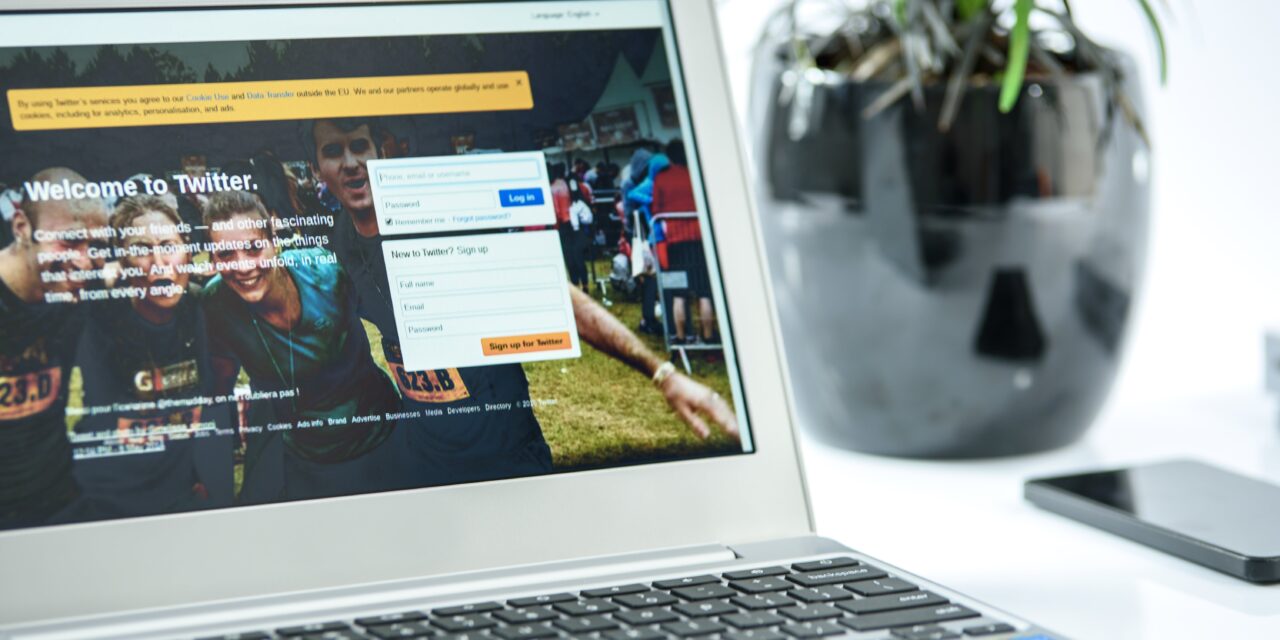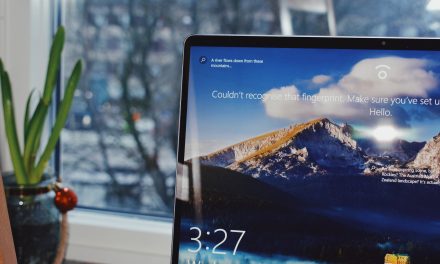In the contemporary coworking landscape, creating a successful coworking space is not just about offering flexible workspaces; it’s about cultivating a vibrant coworking community. That’s why coworking space operators and owners need to understand the importance of fostering a sense of belongingness to enhance customer retention rates.
According to Zippia, data projections reveal that the number of people using coworking spaces is expected to reach approximately 44.9 million by 2024. This means that the market is likely to get more crowded and competitive. To stay relevant, you must know how to publicize your space and attract loyal members.
One way to foster a thriving community for your coworking business is by having an active presence on social media. In this article, we will explore four effective social media strategies to help you attract, engage, and retain coworking members.
1. Instagram for showcasing your coworking space’s aesthetics
Instagram is a visual platform, making it the perfect place to showcase the aesthetics of your coworking space and attract more customers. Studies show that including an image in a social media post is more likely to increase engagement. This is what Instagram is all about.
Capture the essence of your coworking space through high-quality photos, highlighting the cozy workstations, communal areas, and the personal touch that sets your space apart in this competitive market.
Showcase key features of your space such as office furniture, phone booths, and decor. Here’s a good example from an Instagram post by Workbar:
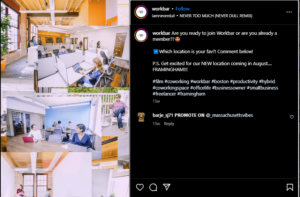
You can even make this better by sharing pictures or videos of people using various facilities in your co-workspace.
Additionally, you can use Instagram to share photos of your team. These posts will help create a sense of community and reveal the real-life experience of working in your space.
You can also use Instagram to share interesting updates like when you’re opening your coworking space in a new location. This will enhance the awareness of your space coupled with the PR services and other marketing strategies you may choose to employ.
2. Facebook for building a tight-knit community
Facebook is a great platform for building a vibrant community to engage and retain coworking members.
Use your Facebook page to offer insights to your target audience. You can post interesting content related to running a business, coworking, or entrepreneurship in general. These are examples of topics that may interest your core audience.
Facebook also allows you to lead your audience straight to the content you share on your website, helping you boost engagement on new blog posts. Here’s an example from Regus reposting a blog post on its Facebook page:

If you’ll be using social media to generate traffic to your website you should ensure that you create the best website for SEO hosting—optimizing every aspect of your site’s content, structure, and performance. This way, you’ll be creating a seamless browsing experience for people who visit your website.
Create a dedicated page where coworking members can feel valued and heard. Encourage members to engage in discussions about relevant topics in the remote work environment. Content like this is more likely to get comments from those in your audience who have something to share. See another example of Regus striking up an engaging conversation on Facebook:
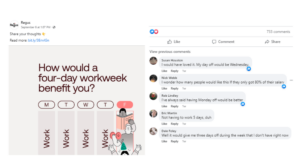
Additionally, you can use Facebook to host events and live streams or offer exclusive discounts and promotions. This will help build relationships with potential customers and keep them engaged with your space.
3. LinkedIn to connect with professionals
LinkedIn is the perfect platform for coworking spaces to connect with professionals within your target audience. Expand your network on LinkedIn by connecting with professionals who align with your coworking space’s core offerings. This network can include individuals such as podcasters seeking a convenient environment to record, freelancers in search of a collaborative workspace, or consultants seeking flexible workspaces for client meetings.
Remember that the content you share on LinkedIn should align with the type of audience on the platform. You may want to share more thoughtful insights and valuable contributions that will benefit professionals in diverse niches.
Consider hosting events and webinars with thought leaders in various sectors too. These collaborations can be magnets for attracting professionals and business owners interested in coworking offices. Here’s an example of a virtual event hosted by GroundWork Coworking space:

When you pair up with renowned experts to host a webinar, you’re likely to capture the attention of your target customers within their audience.
Because LinkedIn is one platform that encourages meaningful contributions, Cloud Room Coworking takes this opportunity to place the spotlight on notable contributions from some of its coworking members. Now, that’s a pretty great strategy for them to retain coworking members, and gain attention on a platform like LinkedIn. A cue that you can follow.

LinkedIn also allows you to create personalized Inmail ads that’ll go straight into your prospect’s inbox, making it perfect for cold marketing outreaches that’ll set eyes on your brand.
That’s not all, LinkedIn is also a good platform for connecting with prospective business partners who may share your interests. So, as you continue to engage on the platform, keep an eye out for potential opportunities to partner for the growth of your business.
4. Twitter for real-time updates and quick interactions
Twitter, now “X,” has a fast-paced nature which makes it an excellent platform for real-time updates and quick interactions. Tweet about upcoming events, special offers, and last-minute availability in your coworking space. Or, some interesting things you’ve been up to.
See Common Desk using a simple post to share how they celebrated International Coworking Day with its digital community:
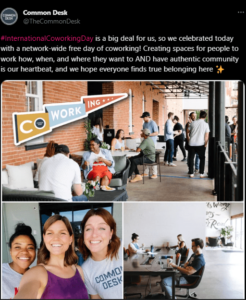
Repost new blogs or articles to boost your website traffic. You can use polls and surveys to gather feedback from your audience, allowing you to tailor your services to their needs. Also, engage with trending topics and industry conversations, positioning your coworking space as an active participant in the broader dialogue.
Finally, respond promptly to inquiries and mentions, demonstrating your commitment to excellent customer service. Twitter’s concise format allows you to convey information succinctly while fostering meaningful connections.
Since we’re talking about social media, it’s only fair to mention that the content you share across your social media channels should be consistent with your overall brand identity. This includes visual content like images and videos, as well as written content like captions. Use filters, color tones, and messaging that resonate with your brand and your audience.
Consistency in branding not only enhances recognition but can also build trust and reinforce your brand’s personality—helping you stand out among the vast pool of social media users. This can also make your social media strategy even more effective in driving engagement and conversions.
In closing
Social media is a powerful tool for coworking providers to reach their target audience and build relationships with members. With a little creativity and consistency, you can create an effective social media strategy that will help your coworking space stand out from the competition.
Let’s review some of the social media strategies we highlighted here. Use Instagram to showcase the aesthetics of your coworking space. Use Facebook to build a coworking community. Use LinkedIn to connect with professionals and Twitter for real-time updates and quick interactions.
With these tips in mind, you can significantly improve your social media efforts as you seek to publicize your coworking space and retain coworking members.




